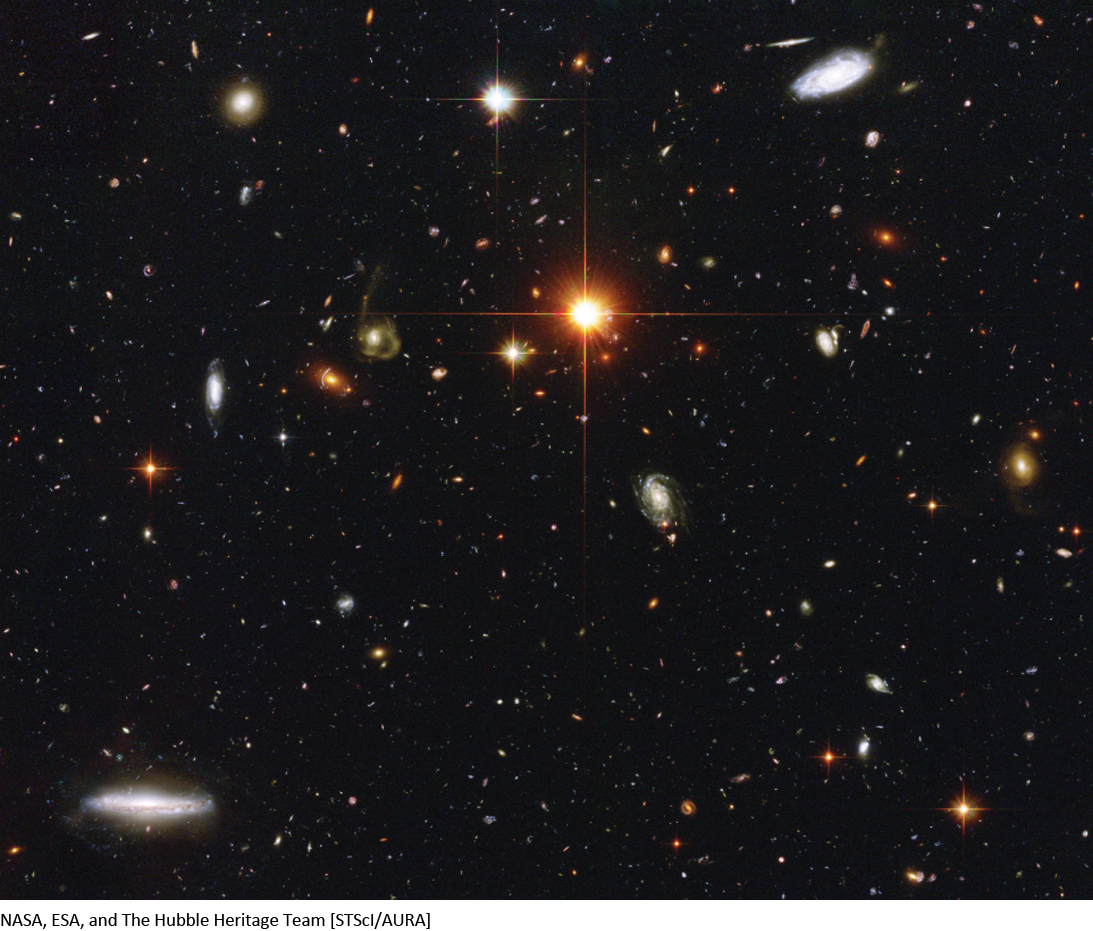15-1 The darkness of the night sky tells us about the nature of the universe
When meeting a person for the first time, how often do you ask, “Where do you live?” Indeed, our sense of place in terms of where we have been, where we are now, and where we are going are important aspects of who we are as human beings. So, in the context of astronomy, where we have been, where we are now, and where we are going are equally important questions about our universe. Cosmology is the science concerned with the structure and evolution of the universe as a whole. One of the most profound and basic questions in cosmology may at first seem foolish: Why is the sky dark at night? This question was brought to public attention in the early 1800s by the German amateur astronomer Heinrich Olbers.
Olbers’s Paradox and Newton’s Static Universe
Olbers and his contemporaries pictured our universe as stars scattered more or less randomly throughout infinite space. The physicist Isaac Newton thought that no other conception made sense. The gravitational forces between any finite number of stars, he argued, would in time cause them all to fall together, and the universe would soon be a compact blob.
Obviously, this has not happened. Newton concluded that we must be living amid a static, infinite expanse of stars. In this model, the universe is infinitely old, and it will exist forever without major changes in its structure. Olbers noticed, however, that a static, infinite universe presents a major puzzle.
If space goes on forever, with stars scattered throughout it, then any line of sight must eventually hit a star. In this case, no matter where you look in the night sky, you should ultimately see a star. As a result, the entire sky should be as bright as an average star, so, even at night, the sky should blaze like the surface of the Sun. Olbers’s paradox is that the night sky is actually dark (Figure 15-1).

Olbers’s paradox suggests that something is wrong with Newton’s infinite, static universe. According to the classical, Newtonian picture of reality, space is like a gigantic flat sheet of inflexible, rectangular graph paper. (Space is actually three-dimensional, but it is easier to visualize just two of its three dimensions. In a similar way, an ordinary map represents the three-dimensional surface of Earth, with its hills and valleys, as a flat, two-dimensional surface.) This rigid, flat, Newtonian space stretches on and on, totally independent of stars or galaxies or anything else. As it turns out, this is not how our universe is structured, and the resolution to Olbers’s paradox about the nature of space came from a surprising discovery by a young astronomer named Edwin Hubble.
Question
ConceptCheck 15-1: Why does Olbers’s paradox suggest that the night sky should actually be light instead of dark?
361